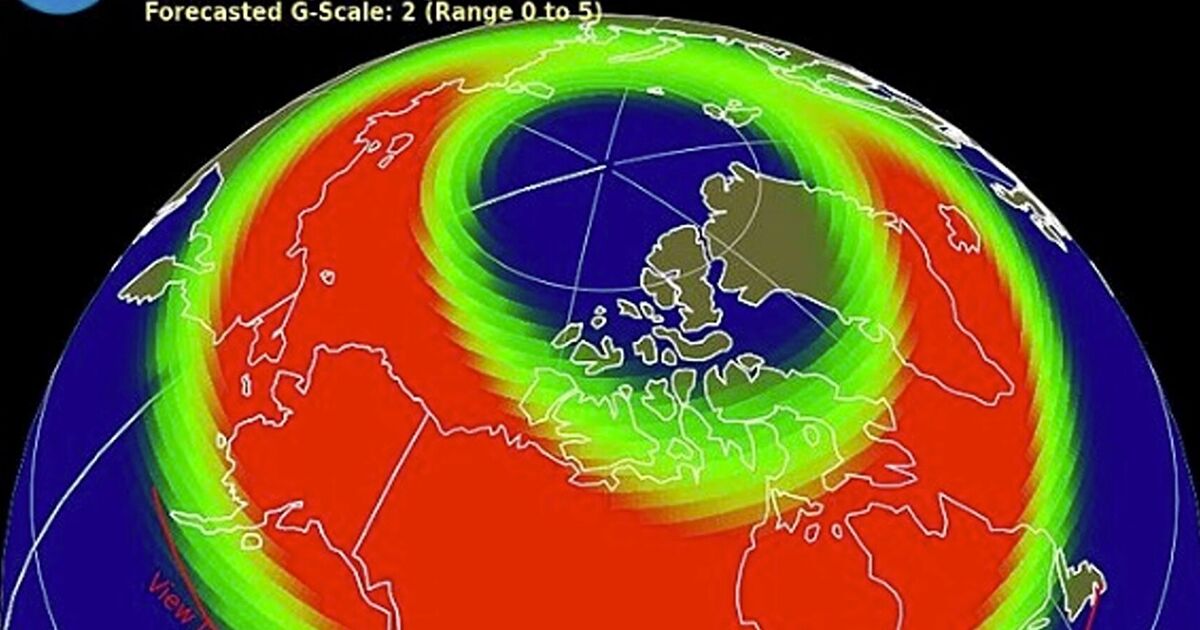

A powerful solar storm is barreling toward Earth tonight, threatening to trigger stunning Northern Lights displays across 18 US states while raising serious concerns about potential power grid disruptions and communication blackouts.
Scientists are warning that the incoming celestial event is what's known as a "cannibal" solar storm - a rare phenomenon that occurs when one massive cloud of charged particles ejected from the sun overtakes and merges with an earlier solar blast, creating an even more devastating impact on Earth's magnetic field.
The geomagnetic storm could reach dangerous G3 (strong) levels early Tuesday morning, with experts not ruling out the possibility it could escalate into a severe G4 storm that would dramatically increase the risk of power disruptions across the northern half of the United States. The news comes as UK weather maps show Britain 'disappear' as 500-mile storm crashes into country.
Power grids face disruption threat
The incoming solar assault poses significant threats to critical infrastructure, with the potential to wreak havoc on local power grids through dangerous voltage fluctuations and transformer damage that could leave communities in darkness.
Beyond power concerns, the storm may also severely disrupt essential services including radio signals, GPS navigation systems, and vital satellite communications that millions of Americans rely on daily.
The scale of these storms ranges from G1 (minor, like a light breeze) to G5 (extreme, like a hurricane), with tonight's event potentially reaching the higher end of that spectrum.
Spectacular aurora displays promised
Despite the risks, sky-watchers are in for a treat as the Northern Lights may become visible across 18 US states, including Alaska, Montana, North Dakota, Minnesota, Wisconsin, Michigan, New York, Maine, New Hampshire, Vermont, and Washington.
Even states as far south as Idaho, Illinois, Iowa, Nebraska, Oregon, South Dakota, and Wyoming could witness the rare aurora phenomenon during the overnight hours - a once-in-a-lifetime opportunity for many Americans.
The optimal viewing window will come between 2am and 5am ET Tuesday morning, when the storm is expected to peak over the Northern Hemisphere and deliver the most vibrant celestial displays.
Officials sound the alarm
A geomagnetic storm occurs when the sun ejects particles, known as a coronal mass ejection (CME), which then collide with Earth's magnetic field, causing it to shake or wobble in a process scientists compare to a strong wind hitting a flagpole.
NOAA's Space Weather Prediction Center has revealed that the solar event is expected to begin Monday night as a G1 (minor) to G2 (moderate) storm, but conditions will likely deteriorate significantly after midnight.
"Periods of G3 (Strong) storming are likely, with a chance for G4 (Severe) storm periods, as CME effects persist," NOAA officials warned in their latest forecast, highlighting the unpredictable nature of the approaching space weather.
Radiation concerns mount
The cannibal solar storm is also expected to bombard Earth with dangerous solar radiation, consisting of high-energy particles known as protons that are violently ejected by the sun during such events.
Monday and Tuesday's event is forecast to produce an S1 radiation storm, meaning it will be like a light rain of particles that poses no direct threat to people on the ground but could seriously affect satellites and put astronauts in space at risk.
While power outages remain unlikely for most areas, a strong G3 or severe G4 storm could trigger minor grid issues in high-latitude regions, with officials warning of a low but real risk of localized blackouts that could affect thousands of homes and businesses.
Communication systems under threat
Solar flares accompanying the storm also send out powerful X-rays that can severely disrupt radio signals across Earth's surface, potentially causing chaos for emergency services and aviation.
R1-R2 (minor to moderate) disruptions might cause intermittent radio or GPS signal problems, while R3 (strong) disturbances could trigger more serious disruptions, including temporary losses of radio contact that could impact critical operations.
NOAA has issued a stark warning that there's a 20 percent chance the storm will produce R3 or stronger disruptions to local radio signals throughout the northern United States, affecting millions of people's daily communications.
The combination of power grid vulnerabilities, communication disruptions, and radiation effects makes this solar storm one of the most significant space weather events of recent years, demanding careful monitoring and preparation from authorities and the public alike.